CAREC FTA: Course 5B Financial Services and E-Commerce
This 1-hour lecture delves into two distinct topics, the first being trade and financial services, and the second being trade-related aspects of electronic commerce.
Part One of this lecture (Financial Services) is structured under seven headings.
Heading 1 “Policy Objectives” examines the different and sometimes conflicting policy objectives that must be reconciled when negotiating the opening of financial services markets in trade agreements. It also describes the need for experts from both the trade negotiations side and the financial services side to work together to achieve optimum outcomes.
Heading 2 “Context and History” discusses what is covered under modern conceptions of financial services market liberalization as well as discussing the importance of trade in financial services as the second largest traded services sector globally today. It also gives a brief historical overview of how we managed to have financial services included in trade agreements at all.
Heading 3 “Typical Commitments” shines a light on some of the more common types of commitments exchanged in the context of trade negotiations on financial services and discuses these in brief detail.
Heading 4 “Exceptions and Carveouts” looks at how the political and other sensitivities surrounding financial services market liberalization have typically been addressed in trade agreements.
Heading 5 “Scheduling Examples” examines the different scheduling architectures that have typically been employed at the WTO and in FTAs and then provides examples of what these mean in practice for the language of commitments.
Heading 6 “The Situation in CAREC” discusses the state of financial services market liberalization in each of the 10 CAREC countries participating in this training. This heading focuses on whether the country in question has already formulated and made commitments on financial services in the context of a trade agreement as well as how open to foreign providers the main financial services sectors (insurance, banking and asset management) appear to be.
Finally Heading 7 “Summing Up” provides a set of concluding remarks that participants can take away with them from Part One of this lecture.
Part Two of this lecture (E-Commerce) is structured under six headings.
Heading 1 “Policy Objectives” examines the wide range of policy objectives that governments pursue both in regulating the digital economy but also when approaching the negotiation of e-commerce chapters in trade agreements.
Heading 2 “Context and History” seeks to define the digital economy and digital trade, before moving on to a brief overview of the history of how commitments in the area of e-commerce have gradually evolved and taken up an increasingly prominent role in trade agreements.
Heading 3 “Low Hanging Fruit” discusses some of the more common and less contentious provisions in FTA chapters on e-commerce that are also likely to form the landing zone for the current negotiations being conducted on the sidelines of the WTO under the so-called Joint Statement Initiative on Trade-Related Aspects of E-Commerce.
Heading 4 “The Tough Stuff” looks at some of the more contentious areas of rule-making that have been pursued and partially adopted in more ambitious trade agreements such as the CPTPP while being only tepidly accepted or outright resisted in more cautious trade agreements such as RCEP.
Heading 5 “The Situation in CAREC” discusses the status of each of the 10 CAREC countries participating in this training. This heading focuses on whether the country in question has already concluded an FTA with an e-commerce chapter as well as how prepared it is currently assessed as being in terms of basic enabling factors such as infrastructure, digital uptake and legislative/regulatory preparedness.
Finally Heading 6 “Summing Up” provides a set of concluding remarks that participants can take away with them from Part Two of this lecture.
Этот часовой модуль посвящен двум различным темам: первая – торговля и финансовые услуги, а вторая – торговые аспекты электронной коммерции.
Первая часть модуля – «Финансовые услуги» – состоит из семи разделов.
В первом разделе – «Цели политики» – рассматриваются различные и иногда противоречивые цели политики, которые необходимо согласовывать при ведении переговоров об открытии рынков финансовых услуг в рамках торговых соглашений. В нем также описывается необходимость совместной работы экспертов как по торговым переговорам, так и по финансовым услугам для достижения оптимальных результатов.
Во втором разделе – «Контекст и история» – рассматриваются современные концепции либерализации рынка финансовых услуг, а также важность торговли финансовыми услугами как второго по величине сектора торговли услугами в мире на сегодняшний день. Здесь также приводится краткий исторический обзор того, как вообще удалось добиться включения финансовых услуг в торговые соглашения.
Третий раздел – «Типичные обязательства» – освещает некоторые из наиболее распространенных типов обязательств, которыми обмениваются в контексте торговых переговоров по финансовым услугам, и коротко рассматривает их в деталях.
В четвертом разделе – «Исключения и оговорки» – рассматривается то, как политические и другие деликатные вопросы, связанные с либерализацией рынка финансовых услуг, обычно решаются в рамках торговых соглашений.
В пятом разделе – «Примеры составления перечней» – рассматриваются различные структуры перечней обязательств, которые обычно используются в ВТО и ССТ, а затем приводятся примеры того, как они используются на практике при формулировании обязательств.
В шестом разделе – «Ситуация в ЦАРЭС» – обсуждается состояние либерализации рынка финансовых услуг в каждой из 10 стран ЦАРЭС, участвующих в данном тренинге. Этот раздел фокусируется на том, сформулировала ли конкретная страна свои обязательства по финансовым услугам в контексте торгового соглашения, а также на том, насколько основные сектора финансовых услуг (страхование, банковское дело и управление активами) открыты для иностранных поставщиков.
Наконец, в седьмом разделе – «Подведение итогов» – приводится ряд заключительных замечаний по темам первой части модуля, которые могут оказаться полезными для участников.
Вторая часть модуля – «Электронная коммерция» – состоит из шести разделов.
В первом разделе – «Политические цели» – рассматривается широкий спектр политических целей, которые преследуют правительства как при регулировании цифровой экономики, так и при согласовании разделов об электронной коммерции в торговых соглашениях.
Во втором разделе – «Контекст и история» – дается определение цифровой экономики и цифровой торговли, а затем приводится краткий обзор истории того, как обязательства в области электронной коммерции постепенно развивались и занимали все более заметное место в торговых соглашениях.
В третьем разделе – «Простые задачи» – обсуждаются некоторые из наиболее распространенных и менее спорных положений в главах ССТ по электронной коммерции, которые также, вероятно, станут темой для текущих переговоров, проводимых в кулуарах ВТО в рамках так называемой Инициативы совместного заявления в области электронной коммерции.
В четвертом разделе – «Сложные вопросы» – рассматриваются некоторые из наиболее спорных нормотворческих инициатив, которые получили продолжение и были частично приняты в рамках более амбициозных торговых соглашений, таких как ВПТТП, но встретили явное сопротивление в рамках более консервативных соглашений, таких как ВРЭП, где их приняли с трудом.
В пятом разделе – «Ситуация в ЦАРЭС» – рассматривается статус каждой из 10 стран ЦАРЭС, участвующих в данном тренинге. Этот раздел фокусируется на том, заключила ли конкретная страна ССТ с главой об электронной коммерции, а также на том, насколько она в настоящее время готова к этому с точки зрения основных благоприятных факторов, таких как инфраструктура, уровень использования цифровых технологий и законодательная/регуляторная готовность.
Наконец, в шестом разделе – «Подведение итогов» содержится ряд заключительных замечаний по темам второй части модуля, которые могут оказаться полезными для участников.
You need to Sign In to see this content.

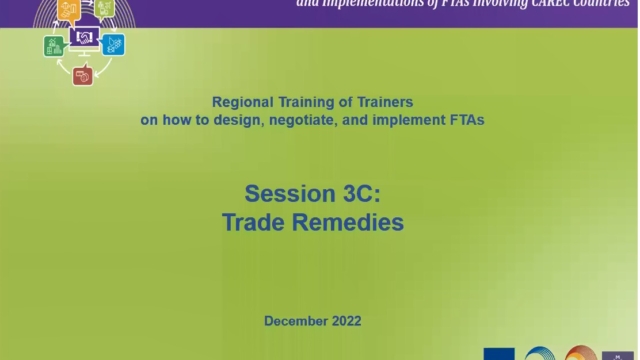
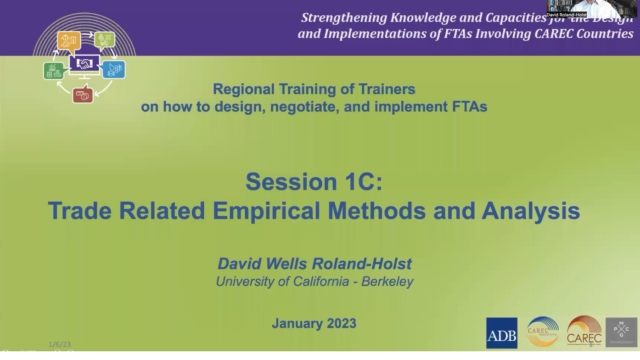

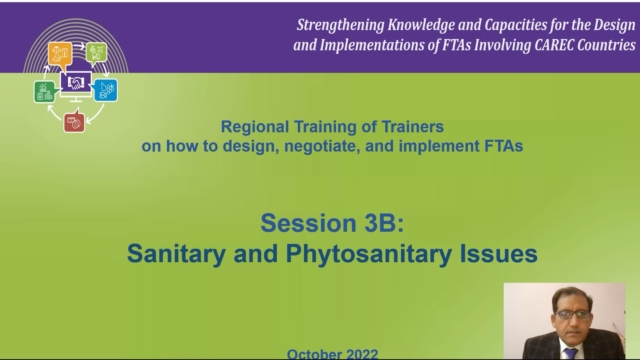

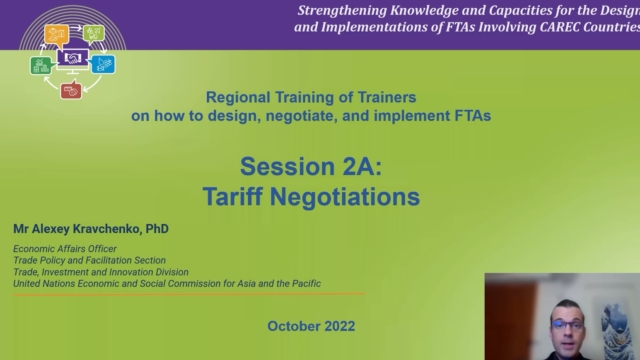
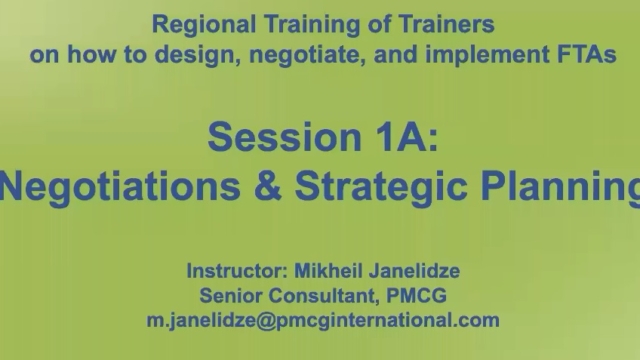
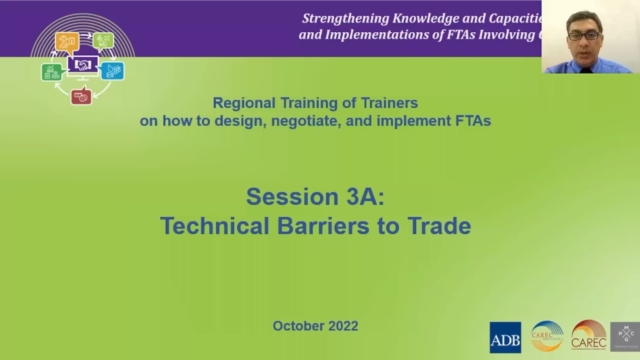
Presentation provided in the Materials section does not correspond to what was given in the online lecture. First few slides are ok and rest are all copied from the previous presentation of the same speaker ! Kindly rectify and upload the presentation in the given lecture !
Thank you. We will look into it and fix it ASAP.